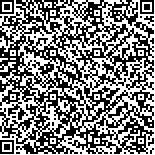下载中心
优秀审稿专家
优秀论文
相关链接
摘要

星机双基地SAR是近年来在国外出现的一种新型空间对地观测传感器.由于卫星平台与飞机平台在飞行速度、飞行高度等方面存在巨大差异,其与较早开展的星载双基地SAB、机载双基地SAB等系统相比具有显著的不同.针对星机双基地SAR系统的3个基础性问题,同时也是非常关键的问题开展了研究工作.即:空间几何关系、多普勒特性和信号模型.从提高分辨率、利于直达波的接收和利于空间同步等角度出发,分析了飞机的适宜路线;推导了计算多普勒参数的精确解析公式;建立了系统的信号模型,分析了成像算法设计的难度;验证了在系统满足特定条件时,传统RD算法经适当改进后仍可适用.在此基础上,可进一步开展任意飞行模式下的成像算法设计等后继研究工作.
In recentyears, spaceborne/airborne bi-static synthetic aperture radar (SA-BSAR) has been proposed as a\nnew kind ofmicrowave remote sensor. The development of SA-BSAR is still at an early stage since there are many challenges faced ahead. Due to the huge difference between the satellites and the aircrafts velocities and flying altitudes,there are obvious differences between SA-BSAR and the earlierbi-static SAR systemswhich have symmetrical structures,such as the spaceborne bi-static SAR and the airborne bi-static SAR. Three basic and critical issues in SA-BSAR are discussed, including geometry, Dopplerproperties and signalmode.l In the discussion ofgeometry, the proper coordinate systems are firstestablished to describe themovementof the satellite and the aircraft. Next, the appropriate flightpath for the aircraft is quantitatively analyzed in detail frommany aspects, including: how to mi prove the range resolution, how to mi prove the azmi uth resolution, how to receive the direct path signalmore conveniently, and how to make the spatial synchronizationmuch easier.The following conclusions are drawn: the aircraft should fly on the same side of the mi aging scene with the satellite; the difference angles among the platforms’course angles can notbe too large; the aircraftmustbe illuminated by the satellite’smain beam within the mi aging tmi e; the aircraftmustappearat the rightposition just in tmi e to cooperatewith the satellite to mi plement the spatial synchronization. In the discussion ofDoppler properties, several analytical formulae for computingDoppler parameters are firstderived using themethod ofvector analysis. Afterwards, to make the formulaemore practica,l the derived expressions are transformed to an easy-to-use form that is expressed by orbit elements of the satellite, satellite antenna pointing angles and kinematical parameters of the aircraft. In the discussion of signalmode,l the model for SA-BSAR is first established based on the model formono-static SAR and then the great difficulties in designing the mi aging algorithm are discussed. Through the analysis for the establishedmode,l the following conclusion is drawn: the traditionalRange-Doppler (RD) algorithm, after properlymodified and extended, can also be applied to the mi aging of SA-BSAR when some special conditions are smi ultaneously met. These special conditions include: the synchronization scheme based on wide-beam illumination is employed;the satellite and the aircraft fly in paralle,l and both the transmitter and the receiver are operated in side-looking modes. In order to validate the above conclusions, two smi ulation expermi entswere performed. The smi ulation resultsverify the accuracy ofthe derived formulae for the calculation of the Doppler parameters, and also verify the applicability of the RD algorithm when some special conditions aremet. On the basis of the research conducted in thispaper, the mi aging algorithm, when the synchronization scheme based on antenna steering is employed and the flightpath of the aircraft is arbitrary, can be furtherdesigned in the next step.

